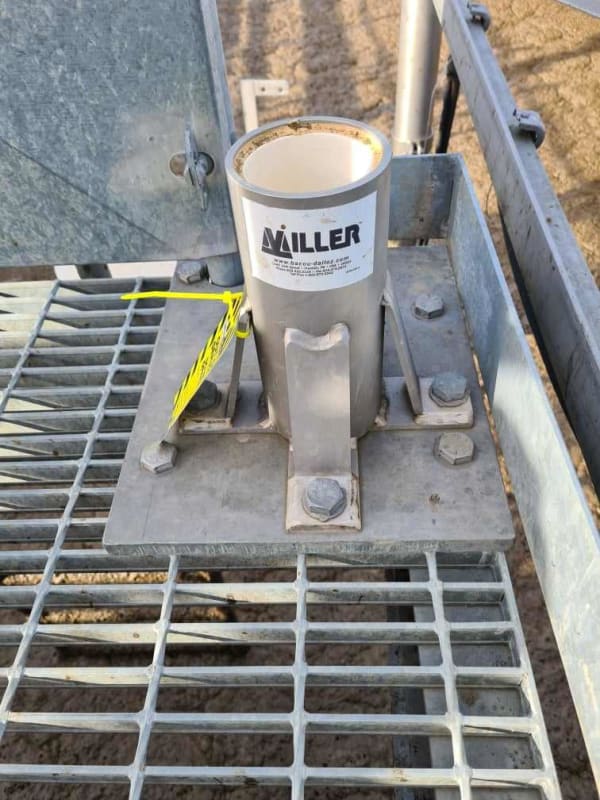NOTE: This is in Australia so will be referencing AS
I have a walkway on one site that has had a confined space davit attached (been there for probably 10 years), and we want to have records of design check comps so I'm producing a few reports.
I'm familiar with AS1657/AS1170 and will use that as the basis for "floor loading" with the addition of the requirement per the AS1891 series.
However, refer to the image below for the existing mounting. I need about 10kNm moment and 22kN normal/down thru this baseplate.
For the complexity of the mesh do I ignore the fixing thru the mesh and comp it with just the 3 fixings into the frame? Im only at a .13 utilization for tension and .42 for baseplate stiffness.
I am just concerned separating the "floor loading" and this live load through the mesh will be overlooking a potential critical area
How would you approach this?

I have a walkway on one site that has had a confined space davit attached (been there for probably 10 years), and we want to have records of design check comps so I'm producing a few reports.
I'm familiar with AS1657/AS1170 and will use that as the basis for "floor loading" with the addition of the requirement per the AS1891 series.
However, refer to the image below for the existing mounting. I need about 10kNm moment and 22kN normal/down thru this baseplate.
For the complexity of the mesh do I ignore the fixing thru the mesh and comp it with just the 3 fixings into the frame? Im only at a .13 utilization for tension and .42 for baseplate stiffness.
I am just concerned separating the "floor loading" and this live load through the mesh will be overlooking a potential critical area
How would you approach this?

